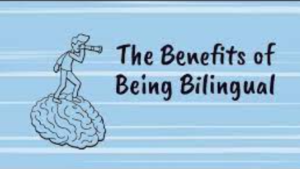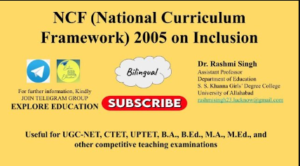Education Thoughts in English With Hindi Meanings: Bilingual Insights

Education thoughts, or educational philosophies, influence teaching methods and learning experiences. शिक्षा विचार सिखने और सिखाने की प्रक्रिया पर प्रभाव डालते हैं। The realm of education brims with profound thoughts that have shaped the way we engage with knowledge and learning.
These educational thoughts stem from various philosophers, educators, and thinkers who have left an indelible mark on educational practices. From Confucius, who emphasized the value of moral education, to Dr. APJ Abdul Kalam, who encouraged creativity and innovation, each thinker has contributed to the rich tapestry of educational philosophy.
These perspectives are not just theoretical; they influence curriculum design, classroom environments, and student engagement strategies. Exploring various education thoughts equips teachers with a nuanced understanding, allowing them to tailor their approaches to the needs of their students. As educators and learners dive into these ideas, they discover avenues for personal and collective growth that resonate across diverse educational landscapes.
Contents
- 1 The Fusion Of Languages In Learning
- 2 Educational Insights From English Proverbs
- 3 Hindi Wisdom In Educational Context
- 4 Translation Nuances Between English And Hindi
- 5 Psycholinguistic Approach To Bilingual Education
- 6 Case Studies: Bilingual Education Success
- 7 Language, Culture, And Identity In Education
- 8 Implementing Bilingual Insights In Curriculum Design
- 9 Conclusion
The Fusion Of Languages In Learning
The Fusion of Languages in Learning reflects the blend of diverse vernaculars in educational settings. Embracing multiple languages not only enriches knowledge but strengthens cultural ties. This fusion, when applied to learning environments, can lead to a plethora of benefits, both cognitively and academically.
Benefits Of Bilingual Education

Bilingual education is more than just learning two languages. It’s a journey of discovery, understanding, and intellectual growth.
- भाषाओं का संगम: The junction of languages, broadens perspectives.
- सांस्कृतिक समझ: Cultural comprehension deepens.
- शैक्षिक उपलब्धियों में वृद्धि: Increases in academic achievements, noted.
- संवाद कौशल में सुधार: Improvement in communication skills.
- बाजार में जोड़तारी: Enhances marketability, securing future prospects.
Cognitive Advantages Of Language Interplay
This fusion stimulates the brain, yielding significant cognitive perks.
| अंग्रेजी में विचार | हिन्दी में अर्थ |
| Enhanced Problem-solving Skills | समस्या को सुलझाने की बेहतर क्षमता |
| Greater Multi-tasking Abilities | एक से अधिक कार्य करने की श्रेष्ठ क्षमता |
| Improved Memory | स्मृति में सुधार |
Learning in dual languages crafts nimble minds. These minds navigate complex tasks with ease.
Educational Insights From English Proverbs
Proverbs are the lamps to our paths, sharing wisdom across generations. They use straightforward language to unfold complex truths. English proverbs give us glimpses into the culture’s values and lessons. Let’s explore how these timeless words shape our understanding of life and learning.
Life Lessons Through English Idioms
- ‘The early bird catches the worm’ – जो जल्दी उठता है, वह सफलता पाता है। This idiom reminds us that success comes to those who start early.
- ‘Don’t judge a book by its cover’ – किताब की सार्थकता उसके कवर से नहीं जानी जा सकती। It teaches us to look beyond appearances.
- ‘Actions speak louder than words’ – काम की तुलना में शब्द मौन होते हैं। This proverb encourages us to value deeds over declarations.
Universal Truths In English Sayings
| English Saying | Hindi Meaning | Educational Insight |
| ‘Knowledge is power.’ | ज्ञान ही शक्ति है | It empowers us to value learning and education. |
| ‘Rome wasn’t built in a day.’ | रोम एक दिन में नहीं बना था | Teaches patience and persistence in educational pursuits. |
| ‘Practice makes perfect.’ | अभ्यास से ही कार्य सिद्ध होता है | It reminds us that regular practice is key to mastery. |
English proverbs hold universal wisdom that applies well beyond the classroom walls. They tell us life’s lessons that can guide our educational journey. These sayings show us that learning is about acquiring knowledge and developing character and community.
Hindi Wisdom In Educational Context
Education Shapes Minds. This timeless truth finds roots in Hindi culture. Hindi wisdom, rich with proverbs, guides learners today. It bridges past and present, helping students and teachers understand deep educational values. The lessons within Hindi wisdom remain relevant. They offer insights into patience, hard work, and integrity. Let’s delve into how traditional Hindi sayings influence current education.
Traditional Hindi Proverbs In Modern Education
- “Neki kar, kuen mein daal” – Do good and forget.
- “Boond boond se sagar banta hai” – Every drop makes an ocean.
- “Der aaye, durust aaye” – Better late than never.
These sayings emphasize persistence and virtue. The first provokes a selfless attitude toward learning. One must learn for the joy of it, not just for the rewards. The second encourages consistency in studies. Even a small daily learning session can lead to vast amounts of knowledge. Finally, the third proverb reminds students that achieving goals takes time.
Cultural Values In Hindi Teachings
Our ancestors knew the importance of values in education. Hindi teachings offer these:
| Hindi Saying | English Translation | Value Imparted |
| “Guru Govind dou khade, kaake lagoon paaye” | The teacher and God stand before me; whom to bow to first? | Respect for Educators |
| “Vidya dadati vinayam” | Education bestows humility. | Humbleness in Learning |
| “Akalmand ko ishara hi kaafi hai” | A hint is enough for the wise. | Wisdom in Understanding |
Respect, humility, and wisdom shine through these words. Students learn to honour their teachers and the knowledge they receive. Humility becomes a life-long trait, as learning is seen as a path to becoming humble. Lastly, being wise means knowing the unspoken and developing insight beyond textbooks.
Translation Nuances Between English And Hindi
Understanding the subtle distinctions between English and Hindi when translating is vital, especially in educational contexts. These two languages have complex nuances that require attention. To bridge the language gap, we need more than a dictionary. We must grasp the culture and sentiment behind the words.
Challenges In Capturing The Essence
The journey from English to Hindi is sprinkled with challenges. Every language carries its own culture. Words loaded with cultural meaning often lose their essence in translation. Hindi phrases may need more words in English, or vice versa. This is not just about words but the feel they convey.
- Idiomatic expressions don’t always have direct counterparts.
- Proverbs and sayings might lose their wisdom when translated literally.
- Even simple educational terms can have different connotations.
The Art Of Translating Educational Concepts
Achieving accuracy in translating educational concepts carries weight. A translator is an artist who paints with words to unite two worlds. Here’s where skill meets creativity in forming bridges of understanding.
Context is the king in translation, especially with educational terms. Concepts like ‘critical thinking’ or ‘collaborative learning’ have broad meanings that must be contextualized carefully into Hindi.
| English Term | Hindi Translation | Notes |
| Empathy | सहानुभूति (Sahānubhūti) | Conveys feelings with others |
| Student-centred learning | छात्र-केंद्रित शिक्षा (Chātra-kendrit Shikṣā) | The focus is on the student’s needs |
| Educational equity | शैक्षिक समानता (Shaikṣik Samānatā) | Equal learning opportunities for all |
Psycholinguistic Approach To Bilingual Education
The ‘Psycholinguistic Approach to Bilingual Education‘ involves understanding how our brains learn languages. This method examines how we think about language. It helps teachers teach better and students learn how to use two languages. The Hindi term for this is ‘द्विभाषिक शिक्षा के मनोभाषावैज्ञानिक दृष्टिकोण‘ (‘Dvibhashik Shiksha ke Manobhashavaigyanik Drishtikon’). Let’s explore this fascinating topic.
Impact On Learning And Memory
Bilingual education shapes how we remember things and can improve our memory. Minds that know two languages might work differently. They remember and learn in unique ways. Hindi meaning for this is ‘सीखने और याददाश्त पर प्रभाव‘ (‘Sikne Aur Yaaddasht Par Prabhav’). Let’s look at how this happens.
- Boosts Brain Power: Learning two languages improves brain function.
- Enhances Memory: Students can remember more stuff quickly.
- Rewires Brain: It changes how the brain works for good.
Language Processing In Bilingual Minds
Bilingual people’s minds process languages in extraordinary ways. The brain deals with two language systems, like having two language tools in the same toolbox.
| Aspect | Hindi Meaning | Description |
| Switching Languages | भाषा बदलना | Bilinguists can switch between languages. |
| Understanding Context | संदर्भ को समझना | They understand which language to use and when. |
| Cognitive Flexibility | बौद्धिक लचीलापन | This skill makes solving problems easier. |
Bilingual education is a powerful approach. It helps kids understand the world in two languages. This makes their learning journey very exciting.
Case Studies: Bilingual Education Success
Welcome to our exploration of Bilingual Education Success. Education opens up windows to the world, and when it’s bilingual, it’s like opening two windows at once. शिक्षा दुनिया के लिए खिड़की खोल देती है, और जब यह द्विभाषी होती है, तो यह दो खिड़कियां खोलने जैसी होती है। In this section, we dive into some case studies that showcase the success of bilingual education programs.
Profiles Of Successful Bilingual Programs
Looking at bilingual programs, we find varied success stories. द्विभाषी कार्यक्रमों में हमें अलग-अलग सफलता की कहानियाँ दिखती हैं। Let’s highlight a few:
- Immersion Programs: These schools immerse students in two languages. ये स्कूल छात्रों को दो भाषाओं में डूबो देते हैं।
- Dual Language Schools: They teach subjects in both English and a second language. ये स्कूल अंग्रेजी और दूसरी भाषा दोनों में विषयों की शिक्षा देते हैं।
- Two-Way Bilingual Programs: Native speakers of two different languages learn together. दो अलग भाषा के मूल वक्ता एक साथ शिक्षा लेते हैं।
Students Experiences And Outcomes
Students’ stories tell us of the broader impact. छात्रों की कहानियां हमें व्यापक प्रभाव बताती हैं। We see improved academic performance and cultural awareness. हमने शैक्षिक प्रदर्शन और सांस्कृतिक जागरूकता में सुधार देखा है।
| Experience | Outcome |
| Bilingual Communication | Enhanced cognitive skills |
| Cultural Exchange | Greater empathy |
| Language Proficiency | Better job opportunities |
Seeing bilingual education in action shows us its power. द्विभाषी शिक्षा को काम में देखकर हमें इसकी शक्ति दिखती है। Kids learn more than just languages. बच्चे सिर्फ भाषाएँ ही नहीं सीखते। They gain a world of opportunities. वे अवसरों की दुनिया पाते हैं।
Language, Culture, And Identity In Education
Educational experiences shape our understanding of ourselves and the world. Language, culture, and identity play crucial roles in this process. They influence how we learn and interact within our educational systems. This section delves into the intricate relationship between these three elements.
Cultural identity forms the backbone of our social existence. In classrooms, students bring diverse backgrounds and experiences.
- Teachers play vital roles in honouring these differences.
- Curricula that reflect diverse cultures can boost inclusivity.
- Students understand better when they see their identities reflected in learning materials.
Role Of Language In Cultural Preservation
Mother tongue education is vital for maintaining cultural heritage. Language acts as a vessel carrying traditions and knowledge across generations.
| Language Feature | Role in Culture | Hindi Meaning |
| Proverbs | Convey morals and wisdom | कहावतें |
| Folktales | Share historic and cultural tales | लोककथाएँ |
| Idioms | Reflect cultural idiosyncrasies | मुहावरे |
Implementing Bilingual Insights In Curriculum Design
Education shapes our lives and the way we engage with the world. Introducing bilingual insights into curriculum design offers a unique path to enrich learning. It helps students grasp concepts in both English and their native language. For example, “Education Thoughts” translates to “शिक्षा विचार” in Hindi. This method enhances understanding across linguistic backgrounds.
Curriculum Frameworks For Bilingual Education
Curriculum frameworks lay the foundation for effective bilingual education. These frameworks discuss what students should learn in each language and how to teach it.

- Align learning goals with language capabilities.
- Integrate cultural insights relevant to both English and Hindi speakers.
- Use bilingual resources to support instruction in both languages.
Example frameworks might include tables that outline key vocabulary in English with Hindi translations:
| English Term | Hindi Translation |
| Mathematics | गणित |
| Science | विज्ञान |
Best Practices For Engaging Diverse Learners
Engaging learners from various backgrounds calls for innovative strategies that resonate with everyone.
- Start lessons with common concepts in both languages.
- Encourage peer-to-peer interaction in both English and Hindi.
- Offer multimedia materials that cater to different learning styles.
Bold visuals can support word associations:
- A picture of a book next to the word “Book/पुस्तक“.
- An image of a tree with its label “Tree/वृक्ष“.
Interactive activities like dual-language storytelling engage students. They understand a story in English and recount it in Hindi, or vice versa.
We foster inclusive education by weaving together English and Hindi, reshaping how students connect with the world around them. Bilingual education breaks language barriers and creates a community where every student thrives.
Conclusion
Exploring educational ideas across languages enriches our understanding. This post aimed to bridge English and Hindi, shedding light on diverse perspectives. Remember, knowledge transcends boundaries, fostering unity and growth. Embrace the wisdom from every culture, and let’s elevate the global education conversation together.



